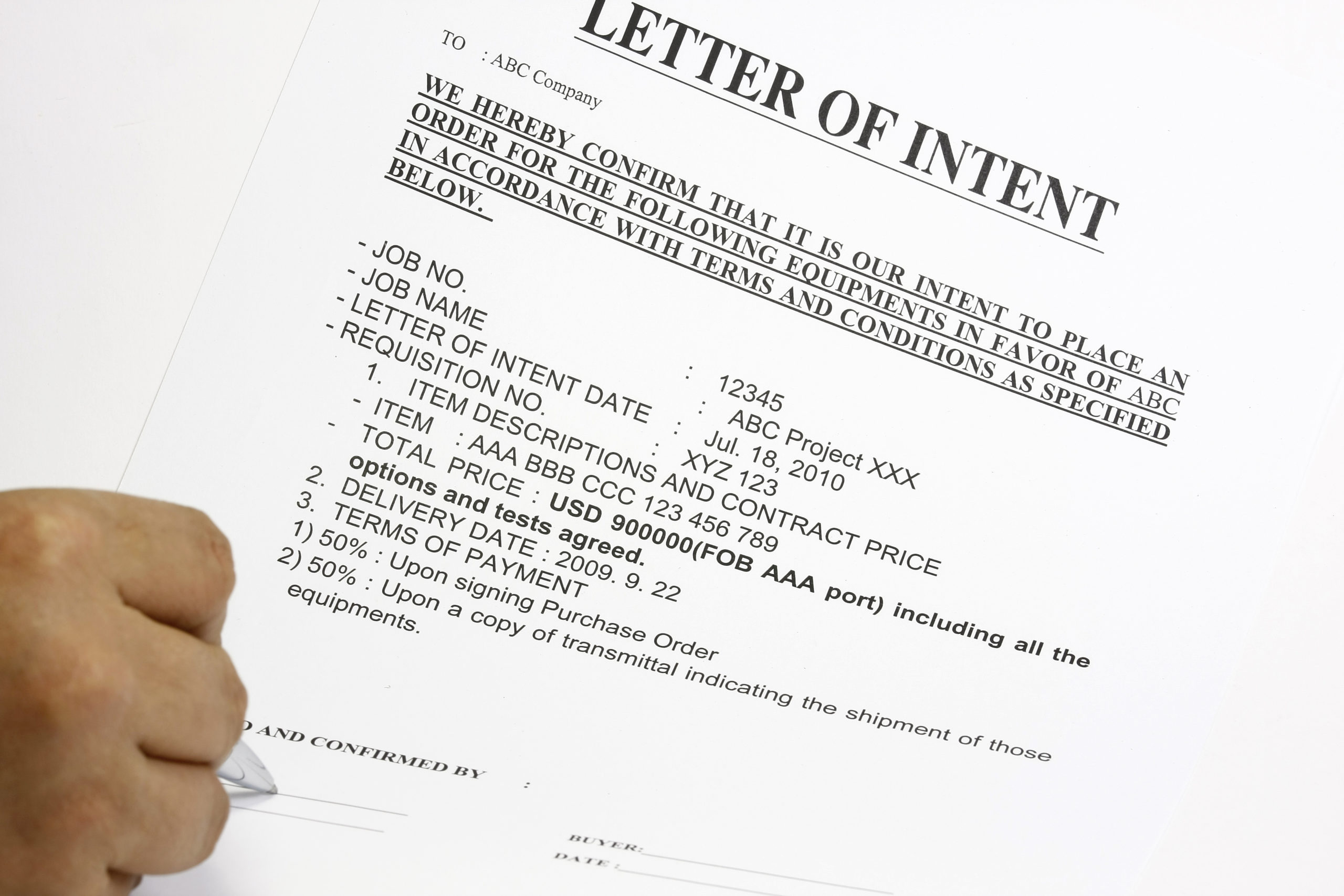Work With a Dedicated Lawyer to Craft a Letter of Intent
What Is a Letter of Intent?
A letter of intent, or LOI, is a letter from one entity to another, stating their ability and willingness to fulfill a specific job or duty. Generally, both entities involved sign an LOI before crafting a contract. An LOI is not legally binding, but it is a way to reassure another party that you agree to the terms and conditions presented.
When Is a Letter of Intent Used?
LOIs are generally issued to acknowledge agreed or considered terms. The document reassures both parties and emphasizes the likelihood of progressing through to a legally binding contract.
What Value Does a Letter of Intent Hold?
By signing an LOI, you acknowledge that you know and agree to all presented terms. Additionally, it can save both parties significant time when it comes to the contract portion of the agreement.
Can a Letter of Intent Contract Become Legally Binding?
Generally, an LOI is not legally binding, but should you wish to make it so, plainly state that it is a binding agreement when you draft the letter. Generally, to put both parties at ease, the LOI automatically states it is not binding, but legal help can help adjust this if desired.
Who Prepares the Letter of Intent?
In a business transaction, the buyer usually crafts the LOI. However, whichever party that looks to gain the upper hand enters an LOI into the deal to show they mean business.
When you introduce a legal letter of intent, you can decide:
- What matters to address
- How specific you want to be
- What provisions to make legally binding
- What details you value the most
Do I Need an Attorney to Draft a Letter of Intent?
LOIs can be extremely detailed documents that require a keen eye to comb through for effectiveness. When you bring in an experienced business attorney to draft legal documents like this, you can choose how involved they are in the process.
They can:
- Help you draft an LOI
- Review your LOI for effectiveness
- Cater your LOI with specific details you wish to cover that both parties agree on
Understanding the Letter of Intent Process
Most business transactions start with a conversation between parties where both sides spell out the terms of the deal and air any concerns they have. Introducing an LOI to the process allows you to summarize all the major and minor details agreed upon or negotiate any additional terms that may have come up along the way.
Step 1: Define Your LOI’s Intent
A letter of intent’s primary purpose is describing the business deal for both parties. By writing out the details, both entities can review terms, pricing, management roles or any other information presented in the transaction.
This document also allows both sides the opportunity to avoid spending time, energy or finances on preparing legally binding alternatives as they work out details. It is also an excellent tool to show another party your level of interest in the transaction, which could set you apart from potential competition.
Step 2: Decide If the LOI Is Binding or Nonbinding
Because both parties involved have different objectives, one side may have a legally binding letter of intent while the other does not. For example, a buyer may want to show they intend to move forward with a purchase, while a seller wants to lock the buyer in at a set purchase price or have the option to walk away without incurring additional expenses. If you wish to compose a binding legal letter of intent, state that in the document.
Some matters a letter of intent contract can cover are:
- Confidentiality statements
- Proposed transaction structure
- Assumed or potential liabilities
- Purchase pricing, terms, forms of payment, etc.
- Conditions of the deal
- Representation and warranties
- Deal termination provisions
- Fees for not completing the deal
Step 3: How to Structure a Deal
The way a deal is structured is an important part of both the purchase and sale. Without proper structure, there can be severe tax consequences. An LOI helps outline how the deal to show how to spend all the proposed time and money.
Some structure considerations are:
- Have you acquired assets to avoid liability issues from the seller?
- Is there a depreciation schedule in place?
- What are the requirements for consent?
- What is the expected number of title transfers?
Step 4: Consult Legal Help When Needed
An experienced business attorney can help draft the letter of intent to ensure:
- That you did not create any contract terms the other party can enforce when you intended them to be nonbinding
- You spot potential issues that may arise because of unforeseen conditions that could necessitate reworking the deal
- That you reduce the risk of additional fees or changes to the agreed price
Work With an Experienced Local Lawyer
Whichever side of an agreement you find yourself on, you must understand how a letter of intent works, how to craft one and why you may need an attorney’s help along the way. When creating a letter of intent, you do not want to leave anything up to chance, doing so may only prolong the process and cost you money.
Get in contact with a letter of intent attorney near you so you can move forward with your deals and get back to what you do best.
Submit a request online or call us today at (866) 345-6784 to get in touch with an experienced lawyer in your area!

